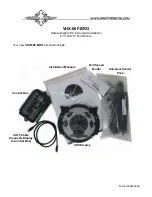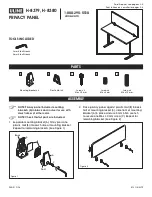
Page
20
of
29
Vessel Shape and Size
A narrow vessel is preferable to a wide vessel. The ultrasonic energy is generated from the tip
and is directed downward. As a sample is processed, the liquid is pushed down and away in all
directions. If the vessel is too wide, it will not mix effectively and some sample will remain
untreated at the periphery. The probe should never touch the sides or bottom of the vessel.
How to prevent foaming
(small sample issue)
Foaming is a problem that often occurs with samples volumes below 1ml. The cause of
foaming is generally 3 issues: amplitude is too high for a small volume, tip is too large for the
volume, or the tip is not inserted to a proper depth.
Tip Depth
The depth of the probe within the liquid is an important issue. If the probe is too close to the
surface of the liquid, it can create foam. If the probe is too deep, it may process against the
bottom of the vessel and not effectively processing the sample. The sample must flow freely
below the tip in order to be mixed effectively. Without effective mixing you cannot ensure the
entire sample volume will pass below the tip and become processed.
The probe should be submerged approximately halfway into the liquid, but there are exceptions.
Before processing actual samples, it is recommended to test the probe in a vessel filled with
water to observe the ultrasonic energy and the flow pattern of the liquid. During this test you
can adjust the probe’s depth until you see adequate mixing and movement of the water.
Viscosity Limitations
Viscous solutions and highly concentrated liquids can be difficult to process. If the liquid is so
thick that it will not pour or circulate easily, it is too thick and cannot be processed effectively.
Keeping Samples Cool
A byproduct of ultrasonic processing is heat generation. Sample temperature will increase over
time with ultrasonic processing and must be controlled. To minimize temperature elevation, use
the pulse mode feature in the power supply’s programming. Additionally, the sample vessel can
be immersed in ice or an ice-salt-water-alcohol bath, or by using a water-jacketed processing
vessel with cold water circulation during processing to help control temperature.
See website for more details and additional information:
www.sonics.com










































